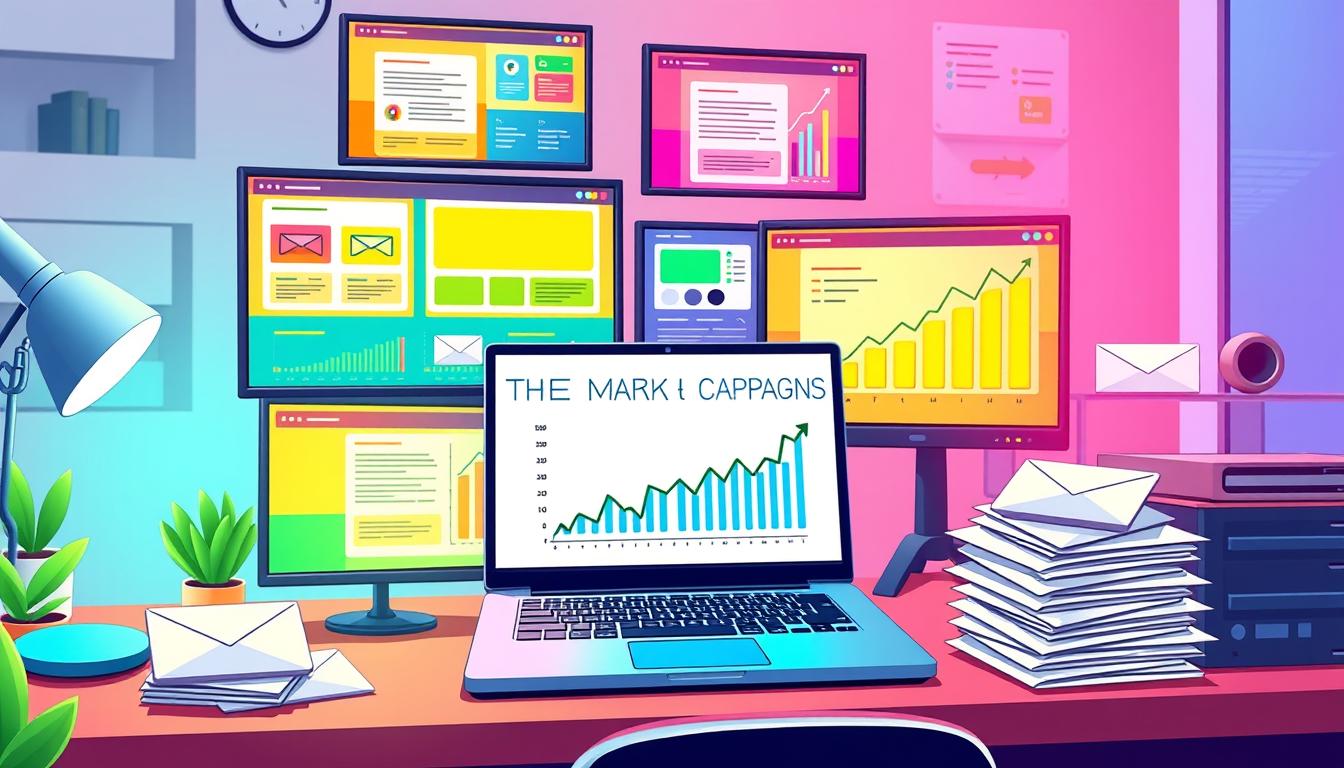Cross-channel attribution shows how all your marketing efforts, including email, social media, and paid ads, work together to drive conversions. By understanding the full customer journey, you can see where email nurtures leads and influences decisions alongside other channels. This holistic view helps you allocate resources smarter and optimize campaigns more effectively. Keep exploring to uncover how giving email credit boosts your marketing results and overall ROI.
Key Takeaways
- Cross-channel attribution reveals email’s role in guiding prospects through the entire customer journey.
- Integrating multi-channel data highlights email’s influence alongside social, paid, and other channels.
- Proper attribution models recognize email’s contribution to conversions, avoiding underestimation.
- Acknowledging email’s impact leads to smarter resource allocation and campaign optimization.
- Holistic measurement ensures email receives appropriate credit for its part in driving ROI.

Ever wondered how your marketing efforts work together to drive conversions? It’s a question that many marketers ask as they try to piece together the complete picture of their customer journey. Understanding how each touchpoint contributes to a sale or conversion is vital, and that’s where cross-channel attribution comes into play. Instead of giving credit to just the last interaction, cross-channel attribution helps you see the full story—how email, social media, paid ads, and other channels work together to influence your audience’s decision-making process. This approach provides a clearer view of your marketing mix, allowing you to allocate resources more effectively and optimize your campaigns for better results.
Cross-channel attribution reveals how all marketing channels work together to influence conversions.
When you focus on the customer journey, you realize it’s rarely linear. Customers might see an ad on social media, receive an email reminder later, and then search for reviews before making a purchase. Without cross-channel attribution, you might overlook email’s role in nurturing that lead, assuming it’s less impactful because it’s not the final touch. But in reality, email can be a decisive factor—building trust, providing information, and guiding prospects along their path. By analyzing data across channels, you can see how email fits into the broader marketing mix and identify which interactions are most influential at each stage. Incorporating multi-channel data integration ensures a more comprehensive understanding of overall performance.
This understanding empowers you to make smarter decisions. For example, if your attribution model shows that email consistently plays a pivotal role in converting leads, you can invest more in crafting personalized campaigns or automations. Conversely, if social media ads generate initial awareness but rarely lead to conversions without email follow-up, you know to strengthen your email strategy to close the loop. Cross-channel attribution reveals the interplay between channels, giving you insight into how your marketing mix should evolve to meet customer expectations.
Implementing cross-channel attribution also means you’re no longer relying solely on last-click or single-channel metrics. Instead, you’re capturing a holistic view of your marketing efforts, which provides a more accurate reflection of your ROI. This approach helps you identify gaps in your customer journey and refine your tactics accordingly. You’ll understand which channels need more support and how to better synchronize your efforts. Ultimately, giving email the credit it deserves isn’t just about recognizing its importance; it’s about leveraging that insight to craft a more cohesive, effective marketing strategy that guides your customers seamlessly from awareness to conversion.
Frequently Asked Questions
How Does Cross-Channel Attribution Differ From Last-Touch Attribution?
You see, cross-channel attribution differs from last-touch attribution because it uses multi-touch analysis to assign credit across multiple customer journey touchpoints. Instead of giving all the credit to the final interaction, it recognizes how each channel influences the customer’s decision. This approach helps you understand the full impact of your marketing efforts, ensuring you allocate resources more effectively and optimize your overall strategy.
What Are Common Challenges in Implementing Cross-Channel Attribution?
You face challenges with attribution models and data integration when implementing cross-channel attribution. It’s tough to accurately assign credit across multiple touchpoints because different channels and devices generate inconsistent data. Integrating data from various sources can be complex, requiring advanced tools and processes. You need to guarantee data accuracy and consistency, making it difficult to get a clear view of customer journeys and optimize your marketing efforts effectively.
How Can Small Businesses Benefit From Cross-Channel Attribution?
Imagine your customer journey as a symphony, where every channel plays a crucial role. Small businesses benefit by using cross-channel attribution to see how data integration reveals which touchpoints truly influence conversions. This insight helps you optimize marketing efforts, allocate budgets wisely, and personalize customer interactions. By understanding each channel’s contribution, you gain a competitive edge, making every marketing dollar work harder and delivering a more seamless experience for your customers.
What Tools Are Best for Tracking Email’s Contribution?
You should use tracking tools like Google Analytics, HubSpot, or Mailchimp, which provide detailed email metrics such as open rates, click-throughs, and conversions. These tools help you see how your emails contribute to overall marketing efforts. By analyzing these metrics, you can better understand email’s role in customer journeys and optimize future campaigns for improved results. Regularly monitoring these metrics guarantees you give email the credit it deserves.
How Do Privacy Laws Impact Cross-Channel Attribution Data?
A stitch in time saves nine, and respecting privacy laws is key. Privacy laws like GDPR and CCPA substantially impact cross-channel attribution data by requiring strict privacy compliance and limiting data collection. You must prioritize data privacy, use anonymized data, and obtain clear user consent to ensure your attribution efforts remain lawful. This way, you can accurately track email’s contribution without risking legal penalties or compromising user trust.
Conclusion
So, next time you ignore email’s role in your marketing mix, remember it’s the unsung hero lurking behind the scenes, quietly stealing the spotlight. Without it, your shiny ads and social posts are like fireworks without a spark—spectacular but short-lived. Give email the credit it deserves, or risk watching your multi-channel masterpiece collapse into a hollow echo chamber. After all, even the best symphony needs a conductor—don’t let email be the forgotten drum in the background.









